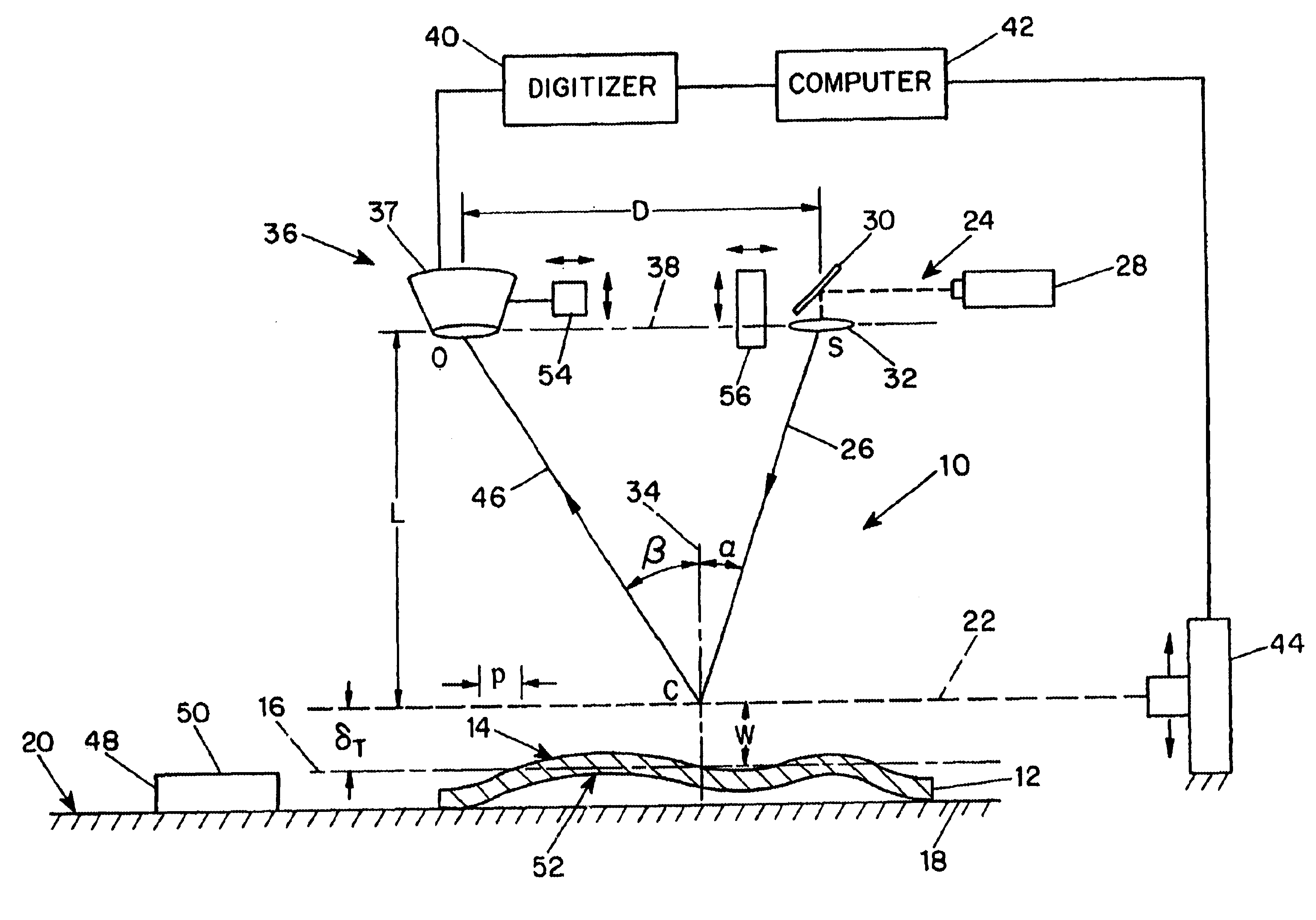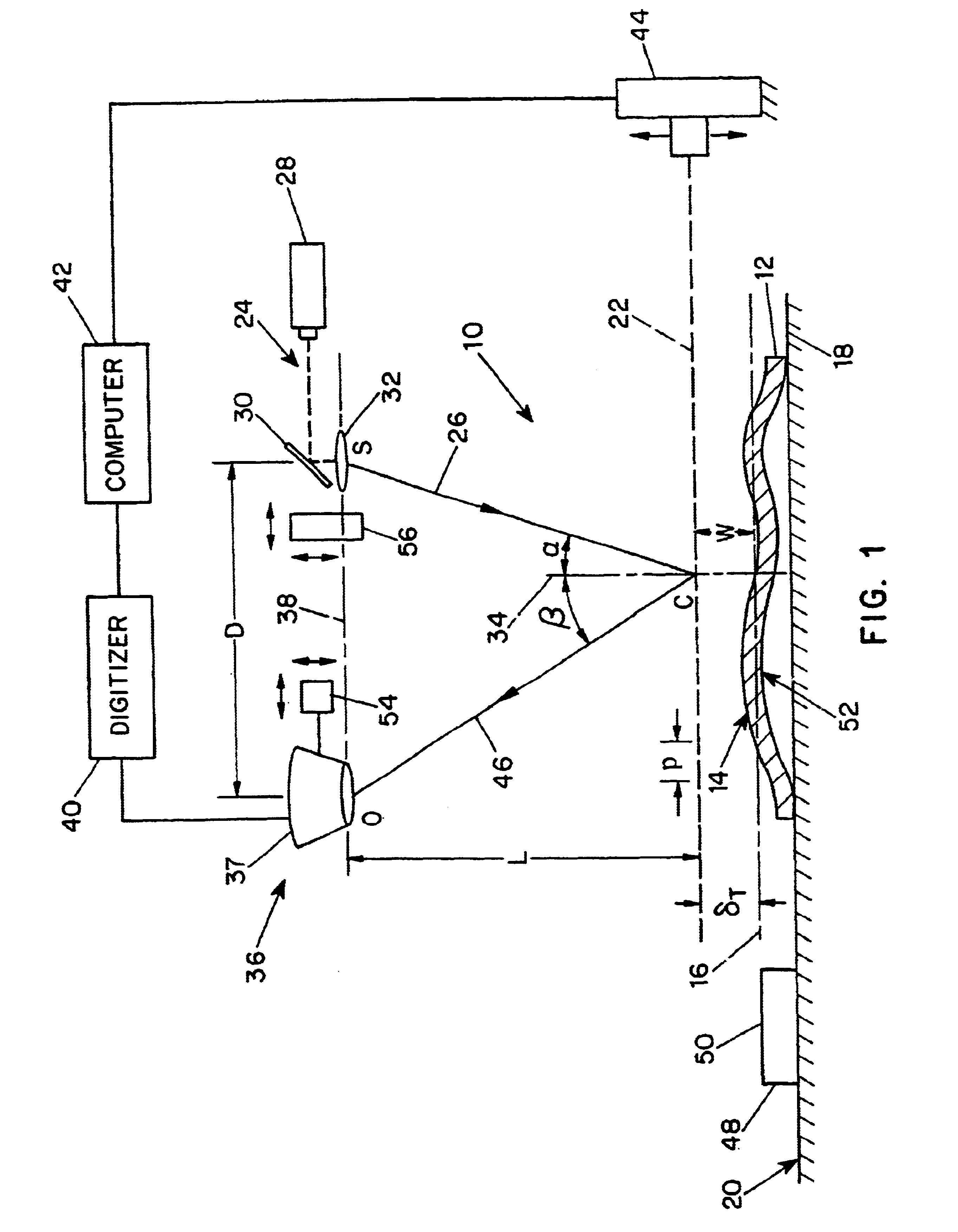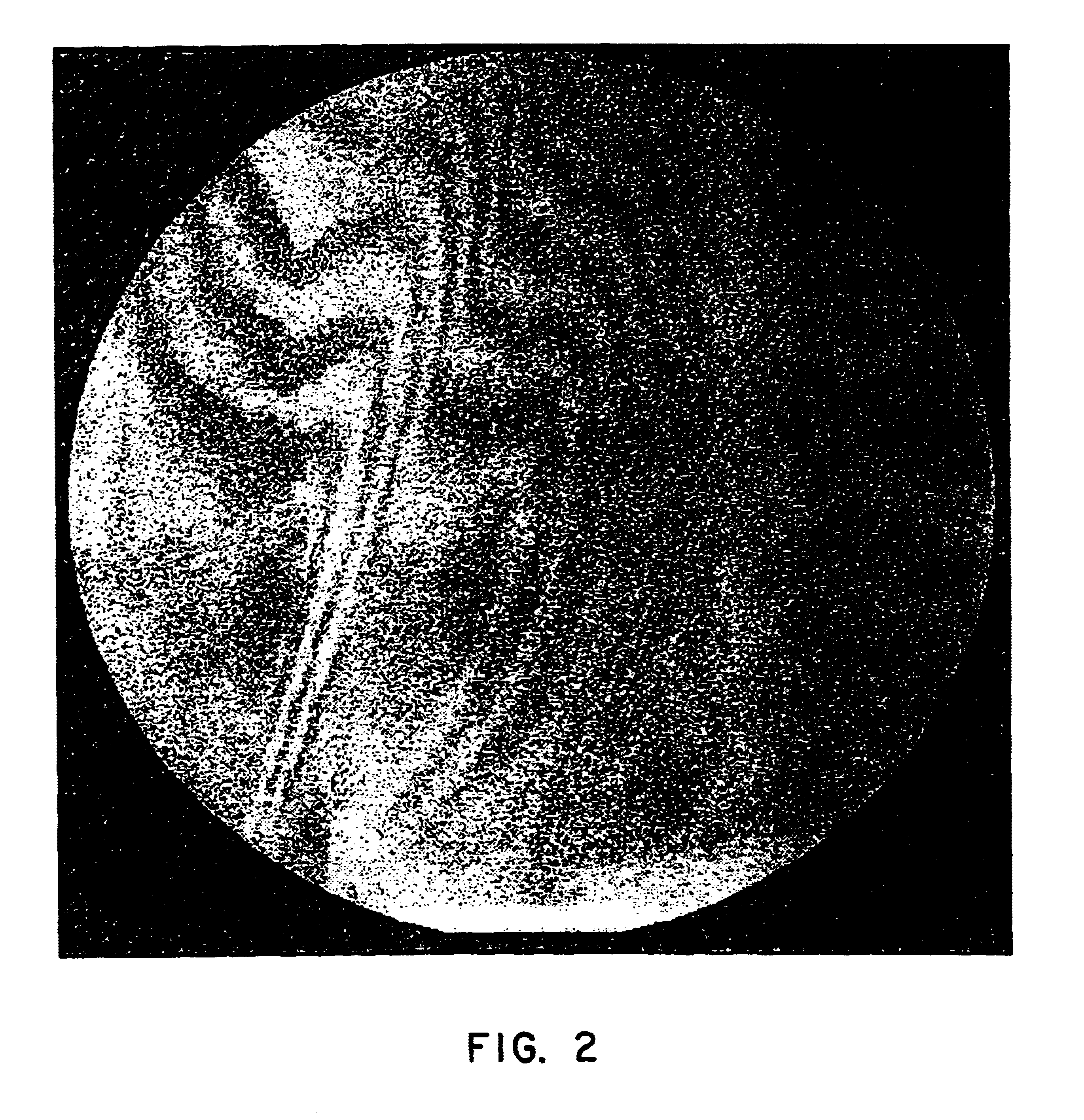Shadow moire surface measurement using Talbot effect
a shadow moire and surface measurement technology, applied in the field of surface measurement, can solve the problems of increasing the time required for inspection of wafers during production, introducing distortion, and current techniques may distort the wafer, so as to and improve the accuracy of measurement.
- Summary
- Abstract
- Description
- Claims
- Application Information
AI Technical Summary
Benefits of technology
Problems solved by technology
Method used
Image
Examples
example 2
Experimental measurements were conducted on a 100 by 90 millimeter polycrystalline substrate wafer as shown in FIG. 3. The test setup and parameters were otherwise identical to that for FIG. 2. The wafer for this example was sliced by an HCT wiresaw. During the slicing process, change of wire took place due to wire rupture. As a result, there was a visible pause line on the wafer surface, about 25 millimeters from the left edge. The moire fringes in FIG. 3 successfully capture the pause caused by the manufacturing process. The three dimensional surface topography is shown in FIG. 6, obtained by the same process of digitizing as for the wafer in Example 1. From the fringe pattern in FIG. 3 and the three dimensional topography in FIG. 6, it is found that the surface jump occurs at x.congruent.25 millimeters with a depth jump of .DELTA.w .congruent.17 microns, which corresponds to the difference of one fringe order. By measuring the actual wafer, the change in depth was found at x=25 m...
example 3
Preliminary investigations have been performed with a 5000 line per inch grating. Visual observation has been carried out, but no images have been prepared. While diffraction makes it more difficult to capture images, basic patterns are discernible.
PUM
 Login to View More
Login to View More Abstract
Description
Claims
Application Information
 Login to View More
Login to View More - R&D
- Intellectual Property
- Life Sciences
- Materials
- Tech Scout
- Unparalleled Data Quality
- Higher Quality Content
- 60% Fewer Hallucinations
Browse by: Latest US Patents, China's latest patents, Technical Efficacy Thesaurus, Application Domain, Technology Topic, Popular Technical Reports.
© 2025 PatSnap. All rights reserved.Legal|Privacy policy|Modern Slavery Act Transparency Statement|Sitemap|About US| Contact US: help@patsnap.com



